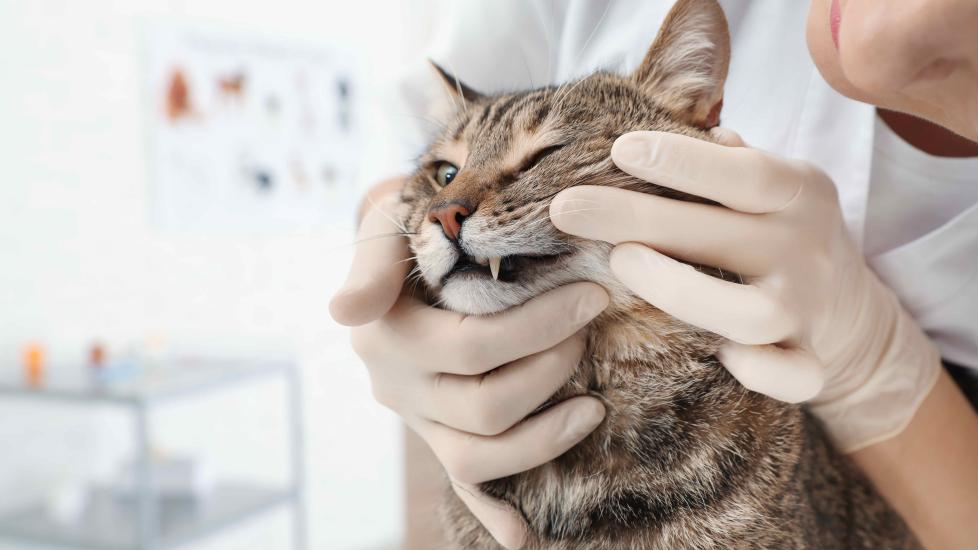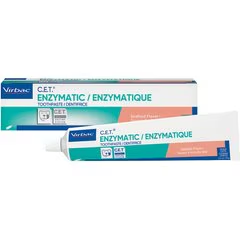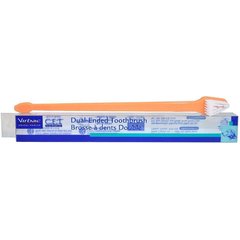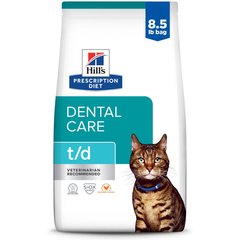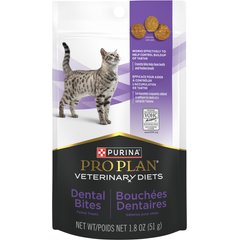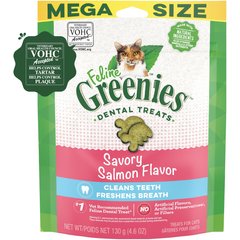6 Tips for Cleaning a Cat's Teeth
Many cat parents don’t think about their cat’s dental care until they notice stinky breath or their veterinarian brings it up at a yearly exam. But dental care is an important part of keeping a cat healthy, because dental disease can contribute to other systemic illnesses and inflammation. Prevention can go a long way in keeping cat teeth healthy.
Here’s how to clean cats’ teeth.
1. Brush Your Cat’s Teeth
Brushing is the best way to clean cat teeth and keep them healthy because daily toothbrushing removes plaque and slows periodontal disease.
Training your cat to enjoy toothbrushing takes time and patience. Start slow by letting your cat lick cat-safe toothpaste off your finger or a toothbrush daily. Always use a soft-bristle brush; a small brush head may make it easier for their little mouths. Some cats tolerate finger brushes best.
To clean cat teeth, train your pet to like the toothbrush and tolerate handling around the mouth (use lots of praise and treats!). As they accept the brush, gently lift the lip to brush the big canine teeth first. Three soft strokes back and forth with a 45-degree angle at the gumline is all it takes. If the bristles are bending while brushing, use less pressure. Then lift the lips farther back to get access to the premolars and molars.
If your cat only tolerates the front teeth being brushed, that’s still great! Doing this at the end of a day at a calm time may help make it less stressful.
2. Don’t Ignore Bad Breath
Bad breath in cats is usually the first sign of “bad” bacteria overwhelming “good” bacteria; a sign something is wrong.
Plaque is the bacterial film that forms on teeth, irritating the gums and leading to redness and swelling. Plaque then mixes with saliva to turn into tartar. Plaque and tartar lead to gum inflammation, or gingivitis. Gingivitis is the first stage of periodontal (dental) disease.
If you notice your cat’s breath has worsened, ask your veterinarian for a dental evaluation. Early detection can stop the progression of periodontal disease, which is harder to treat the more severe it becomes.
3. Take Your Cat to Annual Checkups
Annual wellness exams are important for cat dental care. Your veterinarian is trained to look for signs of disease, including:
-
Irritated gums
-
Gum recession
-
Bad breath
-
Loose teeth
-
Missing teeth
Annual evaluations will catch signs of disease early, and early treatment can slow periodontal disease and help avoid painful—and expensive—tooth extractions down the road.
As predators, many cats don’t display changes to their eating or behavior until they have advanced disease or severe pain. This makes it important to check their mouth at every vet visit.
Your veterinarian will advise when it’s time for your cat to have a dental cleaning under anesthesia. It’s recommended that cats have their first cleaning by the time they’re 2 years old.
4. Ask Your Vet About Dental Diets
One way to help keep a cat’s teeth clean is by feeding them a nutritious dental diet. These are prescription diets that help to reduce plaque and tartar.
The kibbles are designed to act like a toothbrush with every bite. Their large size allows your cat to crunch them up instead of swallowing them whole, mimicking a toothbrush-like effect. Cat dental diets also contain antioxidants and other ingredients that support your cat’s overall health.
Other at-home dental care items include water additives or supplements formulated to be tasty to cats.
5. Give Your Cat Dental Treats
Another way to help your cat maintain good oral health is by giving them cat teeth cleaning treats. They are similar to dental diets in that they provide a crunchy surface that helps to clean their teeth.
Treats like Purina® Pro Plan® Crunchy Bites reduce both plaque and tartar. Greenies™ treats have been proven to reduce tartar when fed twice a day.
6. Let Your Cat Play With Dental Toys
Toys are a great way to enrich your feline’s life at home, and cat dental toys are part of a healthy mouth routine! Dental toys can help clean cat teeth by encouraging chewing or gnawing.
By following these tips, you can help keep your cat’s clean and healthy.
Featured Image: Adobe/New Africa
